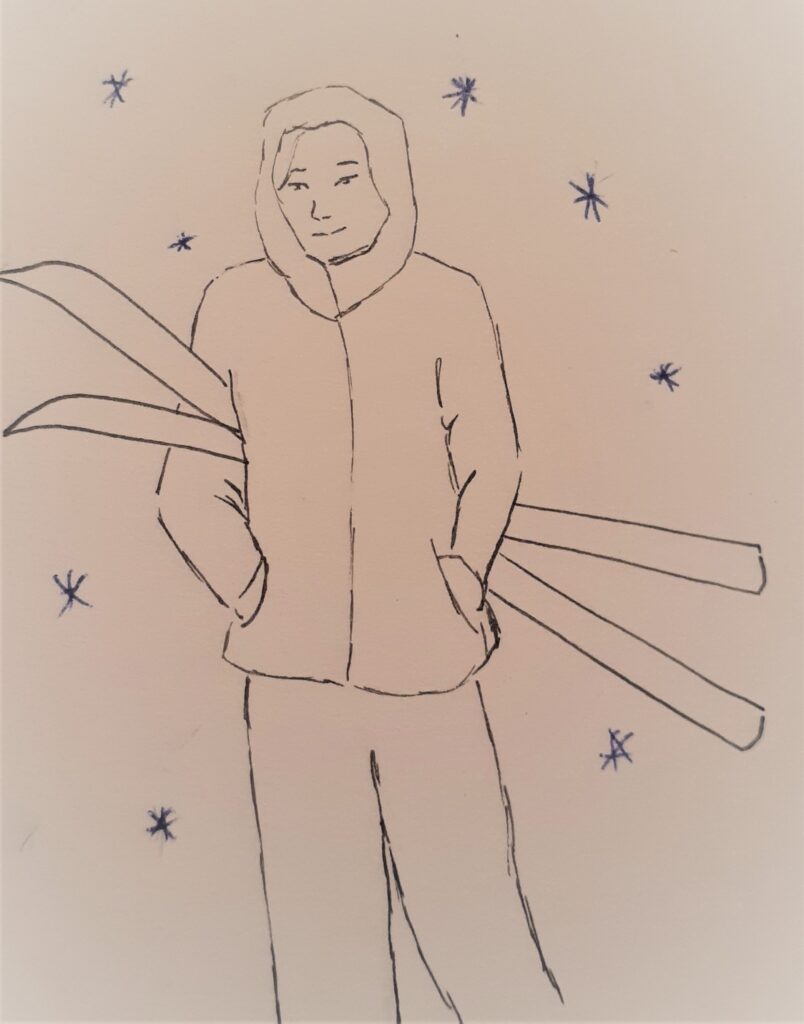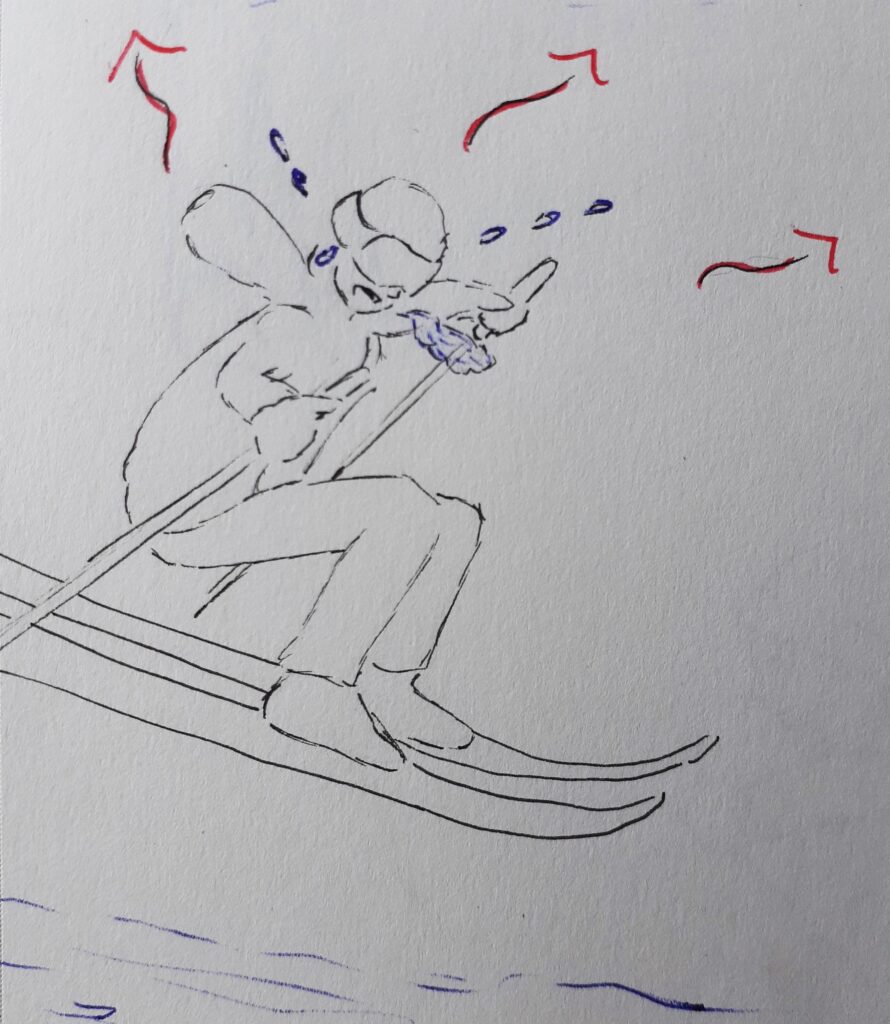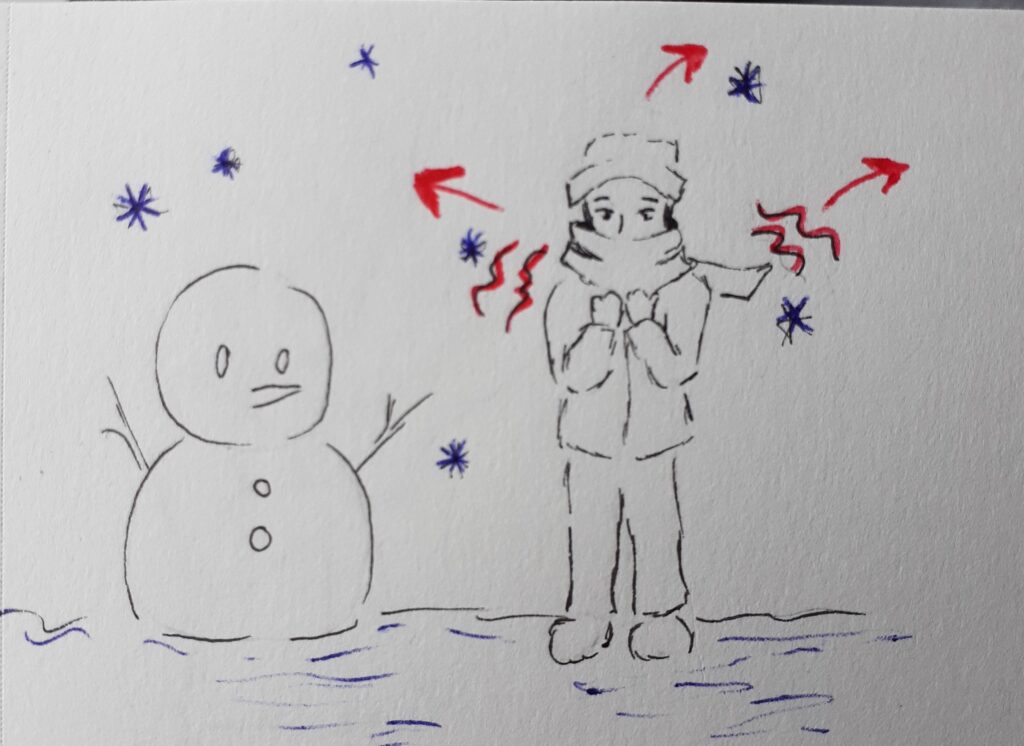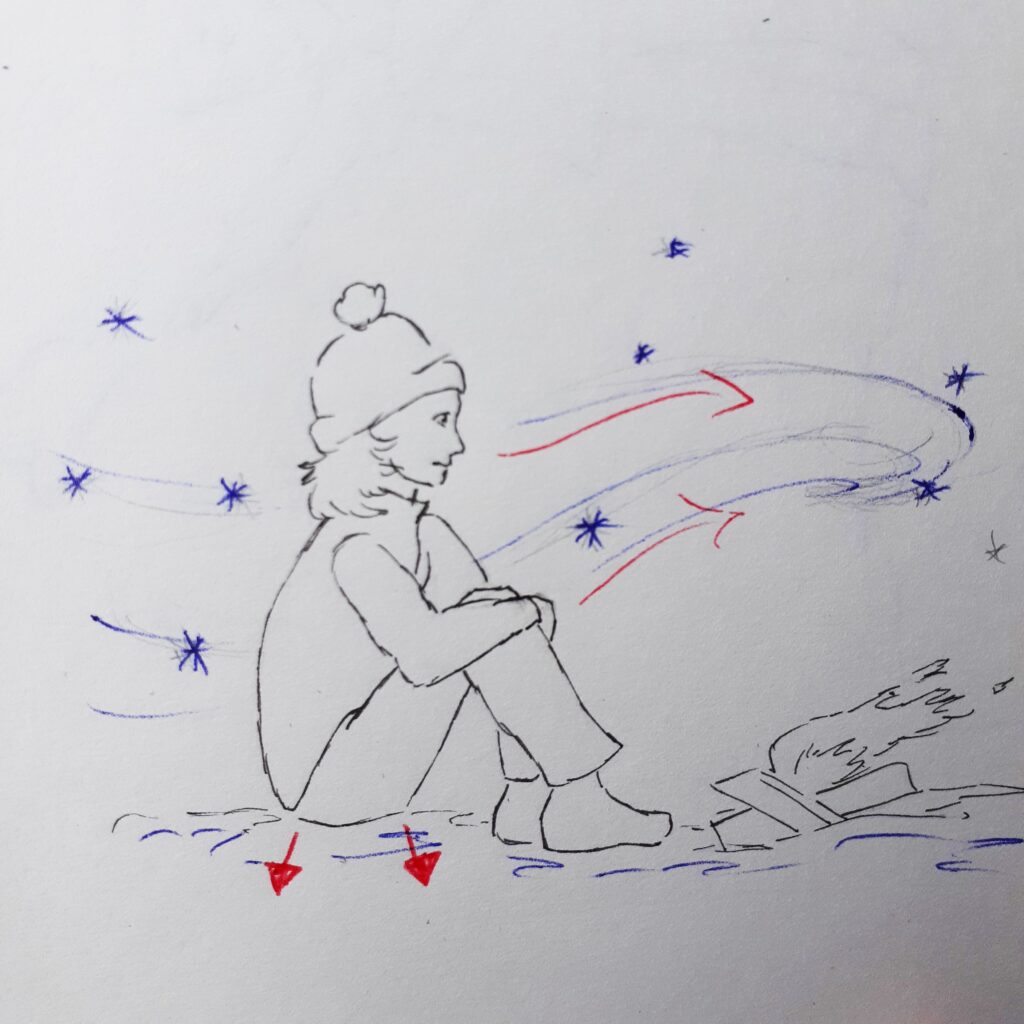Winter Preparation
Being prepared to be outdoors in snowy, icy, and cold weather means you can concentrate on fun and not temperatures. Taking measures to stay warm during outdoor activities is important to stay comfortable and safe. Serious heat loss can result in issues such as hypothermia and frostbite, which can be dangerous and even deadly. As your body gets colder, blood vessels constrict to keep organs close to your heart warm. This means body parts like fingers and toes get cold faster. This is why you start shivering – to keep warm!

Hypothermia
Hypothermia is a decrease in core body temperature which can lead to a disruption in normal body functioning. The most common causes of hypothermia is exposure to cold-weather conditions or cold water (95° or less). However, any prolonged exposure to any environment colder that your body can lead to hypothermia.
Signs and symptoms include shivering, exhaustion, confusion, memory loss, slurred speech, and drowsiness.
Treatment: Move the person out of the cold, remove wet clothing, cover the person with blankets, and make sure they are not sitting directly on the cold ground. Monitor breathing, provide warm drinks, and use warm dry compresses.
Frostbite
Frostbite is the freezing of body tissues. Usually fingers and toes get cold first, so make sure socks and gloves stay dry,
Treatment: Get the person to a warmer environment to rewarm the frozen body part. If this is not possible, do not attempt to rewarm the body part is there is a chance it may freeze again.
Four Main Ways Body Heat is Lost
Conduction
- loss of heat due to two objects in direct contact with one another
- heat transfer gets faster is the objects are wet, so staying dry is extremely important in cold temperatures
- example: sitting directly on a snowbank
Convection
- loss of heat similar to conduction, except one of the objects is in motion
- example: wind chill
Evaporation
- heat loss due to water changing from a liquid to a gas
- example: sweating, exhaling
Radiation
- loss of heat due to the environment’s temperature difference
- example: someone outside in 15° weather with a body temperature of 98°



Check your understanding with this quiz!
Loading…How to stay warm while participating in Winter outdoor activities
When participating in winter outdoor activities, it is important to dress properly to avoid cold injuries and have the most enjoyable time possible. To the right are some layers to consider wearing or bringing on an adventure.
Staying hydrated and consuming calories are another great way to keep warm or warm back up when outside in the Winter. This is due to the processes that drinking and eating require. When a person eats food or drinks water, their body needs to put it to use, and therefore, it must go through processes that consequently make heat. On top of that, if someone consumes warm foods and beverages, they will warm the person up before those processes even occur. Consider bringing soup, tea, or hot cocoa on adventures in order to utilize both of these means of staying warm or warming up.
